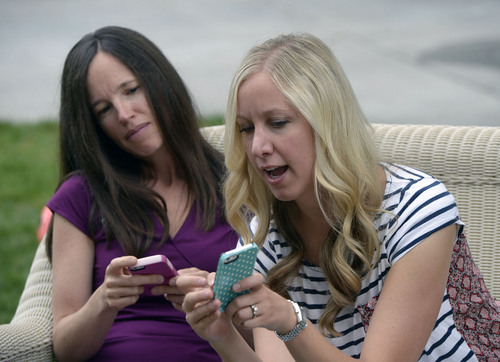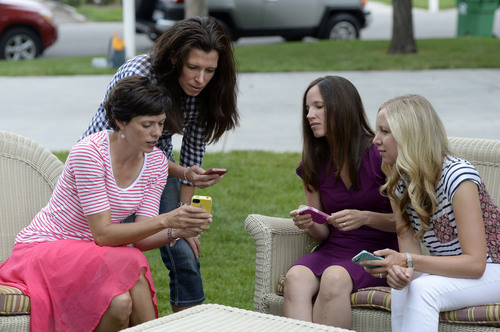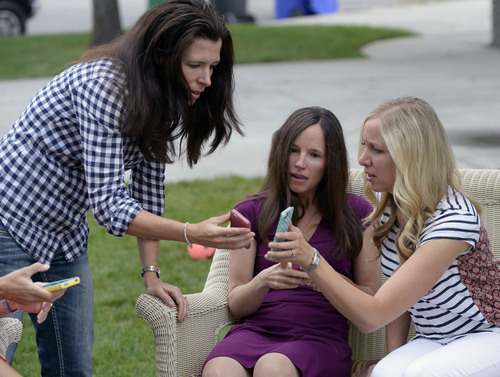This is an archived article that was published on sltrib.com in 2014, and information in the article may be outdated. It is provided only for personal research purposes and may not be reprinted.
In the past, kids had to walk to school, uphill both ways, in the snow — and they didn't even have a smartphone app to help them.
The Utah Department of Transportation (UDOT) has fixed that (at least the app part).
UDOT unveiled on Tuesday a new, free app aimed at making it simple for Utah kids to safely walk to school. The Walking School Bus app helps parents locate and coordinate with other walkers in their neighborhoods, and it alerts parents when their children make it to class.
Cherissa Wood, with UDOT, said there's been a 65 percent reduction in the number of kids walking and biking to school in the last 25 years nationwide, and she said the main reason is safety concerns.
"We wanted to help resolve some of those concerns by creating something to make it easier and safer, to help those kids walk and bike to school," Wood said.
A handful of parents at Howard R. Driggs Elementary in Holladay and Nibley Park School in Salt Lake City began beta testing the app last school year.
Driggs parent Darci Hall said she especially likes the feature that tells her when her children arrive at school. The app is designed with the intention that at least one parent accompany each group of kids.
When the parent and children get to school, the parent flips a switch within the app that alerts all the other parents.
And it's scatterbrain proof: If the parent forgets to flip that switch, the app reminds him or her about 10 minutes after the group should have arrived.
"I love that," said Hall, who has four children ages 7 to 15 who mostly walk to school. "I think every parent is concerned that their kid made it."
Driggs parent Liz Smith said neighborhood kids have long trekked to school together, but the app has simplified organization for parents.
Before the app, parents often communicated via text messaging. The parent assigned to walk with the group on any given day would often be barraged with texts about families running late, kids being sick and other issues.
"Every morning we'd get this string of texts," said Smith, a mother of four.
The app, however, lists kids expected to join in the walk, and parents can simply uncheck a child if he won't be there that day. That way, the parent who's walking knows whom to expect.
Plus, the app can help parents who may not know others in the neighborhood join walking groups.
When a parent downloads the app, a list of groups near him or her appears, and the parent can ask to join a group by sending a photo of himself or herself, address and phone number to the group administrator. The parent administrator can then accept or deny the request. Information such as starting addresses of walks, names and times are private until a parent's request is accepted.
Increasing the size of groups walking to school can help make those trips safer, said Driggs parent James Sweeten. His neighborhood, for example, has no sidewalks but lots of twists and turns.
"A group of five to 10 kids walking to school together, it's a lot safer because they're in a group and visible, versus one or two kids going around a blind turn," Sweeten said.
Parent Catherine Arveseth said, at first, she didn't see the point of the app.
"Originally, I kind of thought, 'Why do we need an app to organize a way for our kids to walk to school? Can't we organize it ourselves?'" Arveseth said.
But she said she soon became a fan of the technology and all it can do. The app also tracks statistics, showing distance, calories burned and air pollution savings, among other things.
Hall said she's in favor of anything that makes it easier for her kids to walk to school.
It's additional exercise and gives them a good start to their day, she said.
"I feel like it's recess before school," Hall said. "They get their energy out. They get their wiggles out. They get to be social."













